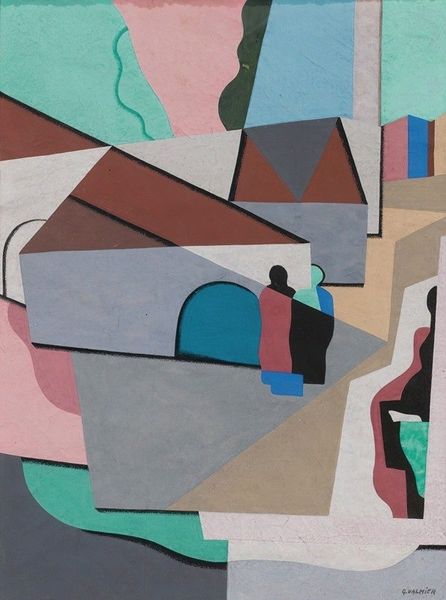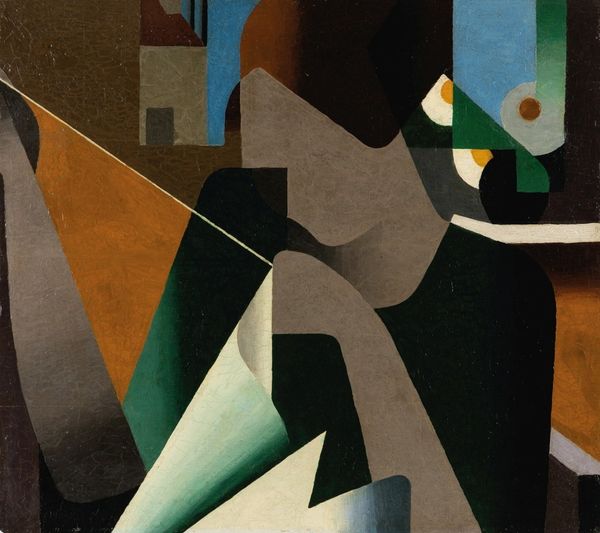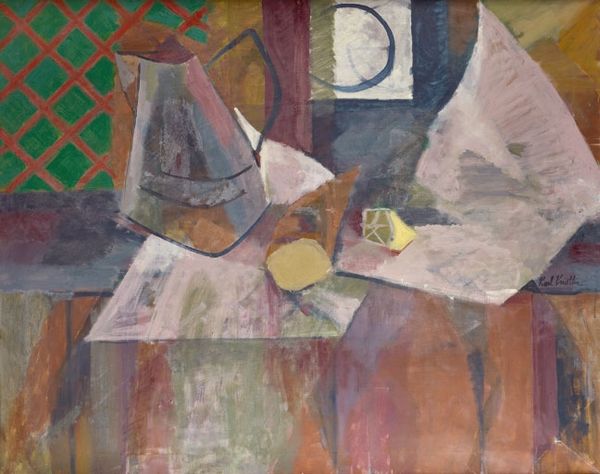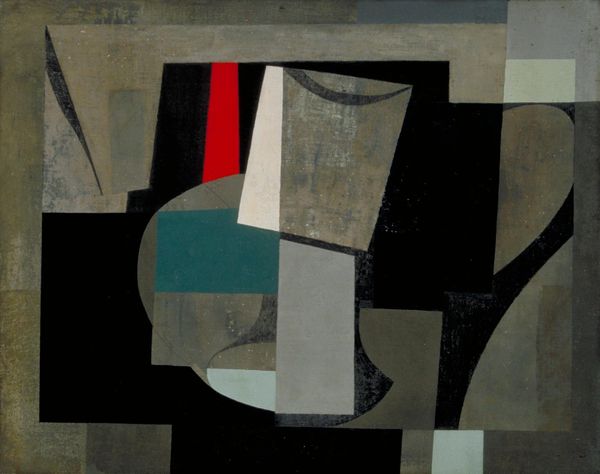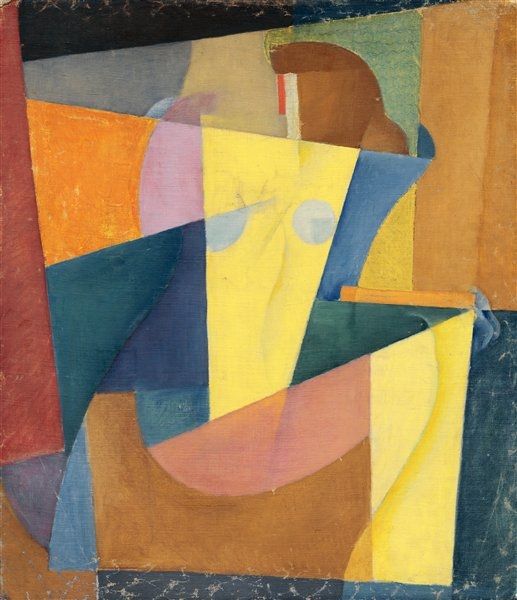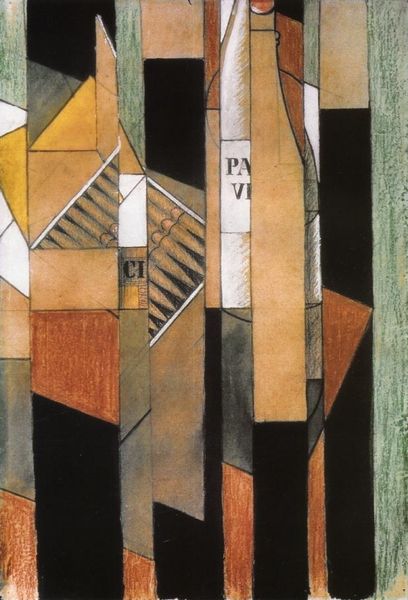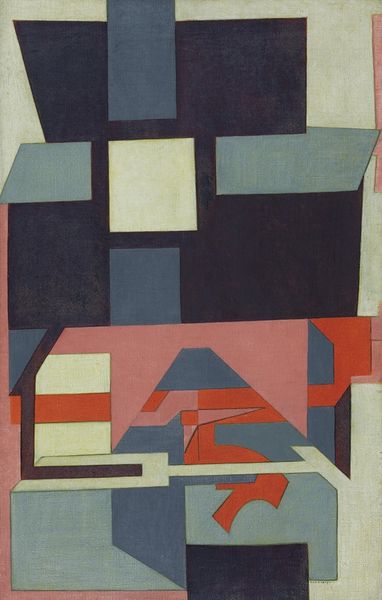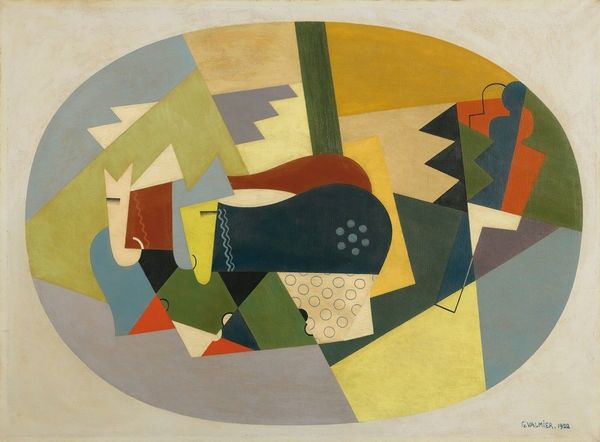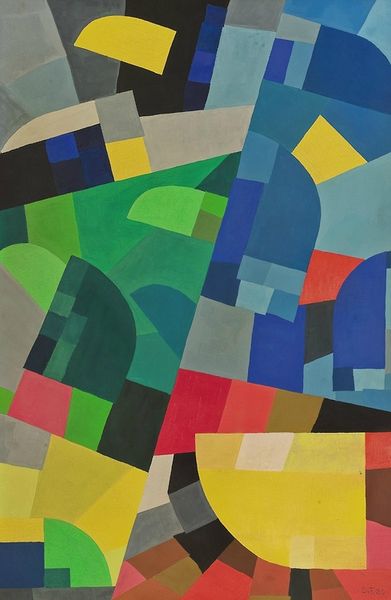
mixed-media, painting
#
cubism
#
mixed-media
#
abstract painting
#
painting
#
painted
#
geometric
#
abstraction
#
bauhaus
Copyright: Marcelle Cahn,Fair Use
Curator: Welcome, everyone. Before us is Marcelle Cahn's "Composition" from 1937, a striking example of her mixed-media explorations within abstraction. Editor: It's immediately arresting, isn't it? The muted color palette juxtaposed with the stark geometric forms creates a sense of…almost industrial melancholy. Curator: Indeed. Cahn's background, deeply entrenched in Bauhaus principles, greatly shaped her understanding of the socio-political dimensions embedded in geometric abstraction, moving away from conventional definitions of beauty. Her commitment extended beyond aesthetics to advocate for avant-garde artistic and political resistance during turbulent times. Editor: I'm fascinated by how the forms interact. Notice how the rigid lines bisect softer, curving shapes. Cahn’s strategic play with varying mediums – perhaps a mix of paint and collage? – calls our attention to the act of constructing, deconstructing and arranging as manual processes. Curator: Precisely. The overlapping planes disrupt conventional perspective, inviting a multi-faceted interrogation of reality and the sociopolitical construction of seeing. The profile that subtly emerges can be read as Cahn’s assertion of the female gaze in art historical canons defined by men. Editor: Thinking about materials and construction, I’m curious about her choice of colors. The juxtaposition feels purposeful – gray, a color loaded with industrial and urban connotations, up against brighter hues of possibility. Curator: Cahn was incredibly invested in challenging and dissolving traditional art hierarchies. Her use of simple forms in this composition rejects elitist notions that equated abstraction with universality, advocating instead for accessible visual vocabularies reflective of broader lived experiences, gendered politics, and cultural conditions of her era. Editor: It definitely gives us much to think about, questioning how our art interacts with political issues and historical expectations of gender. Thank you for bringing all of these contexts to our understanding. Curator: Absolutely. Hopefully, we begin to rethink art’s historical lineage when reflecting on it.
Comments
No comments
Be the first to comment and join the conversation on the ultimate creative platform.
